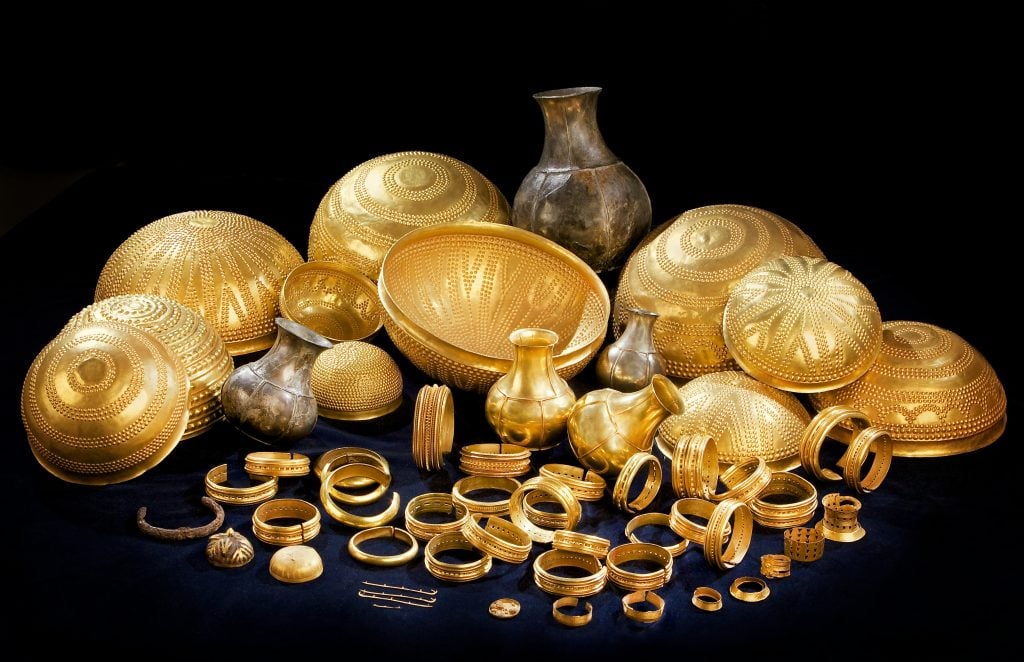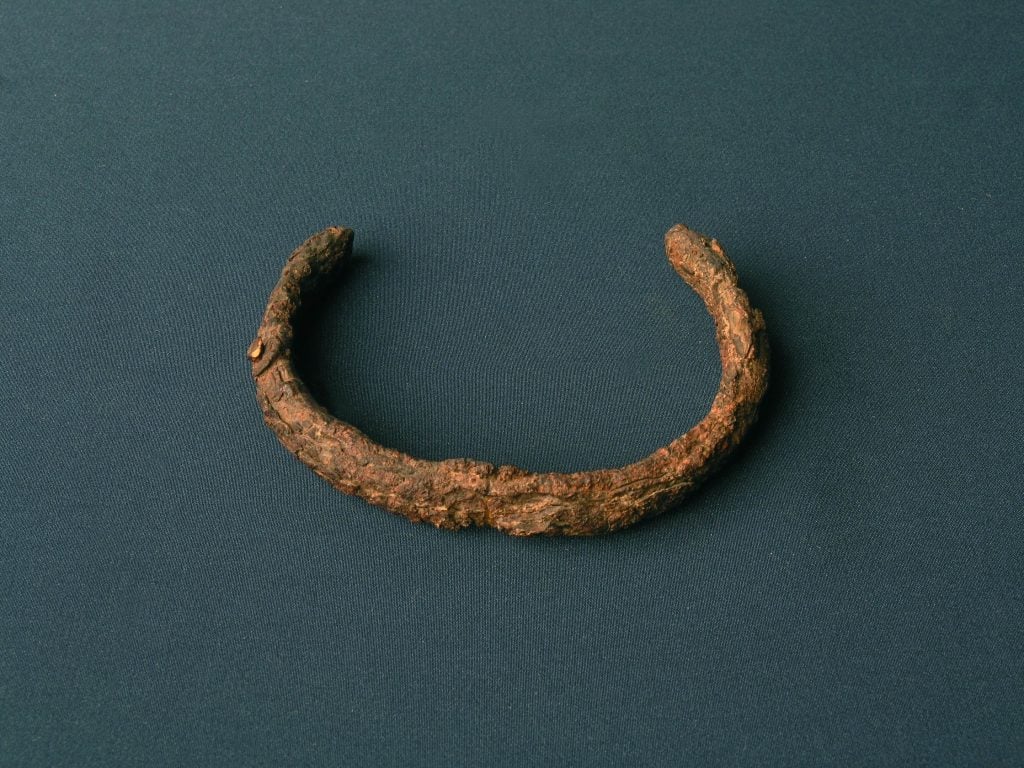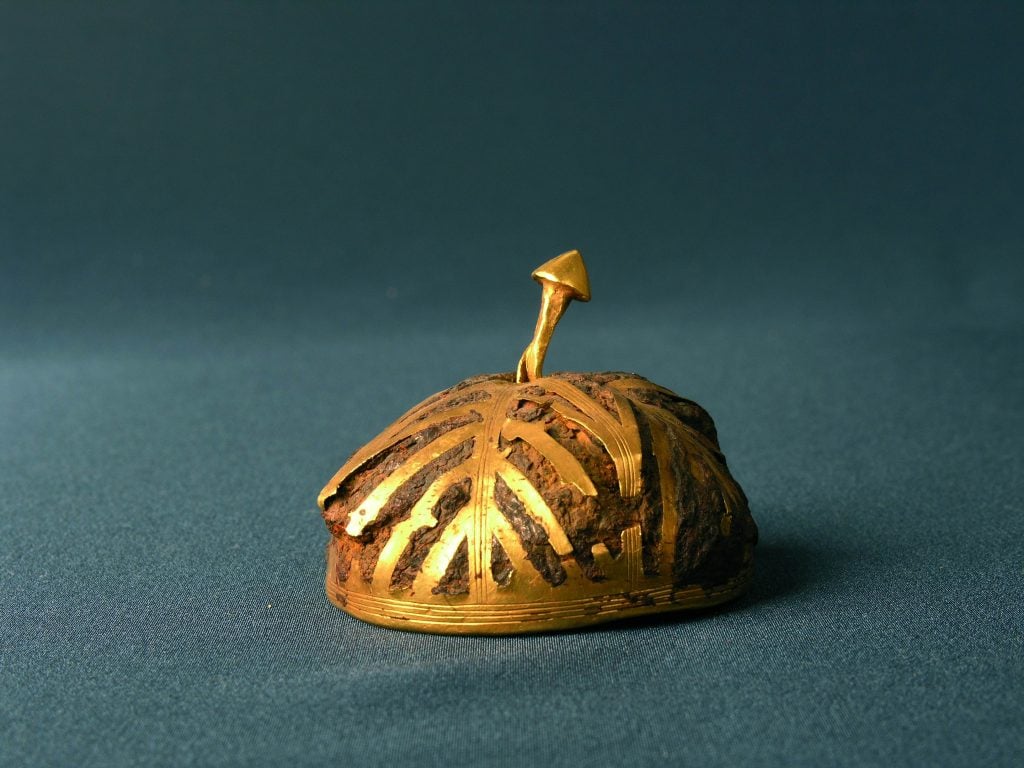Archaeology & History
Treasures From a Famed Bronze Age Hoard Were Created With Extraterrestrial Metals
Two items in the renowned set of objects piqued researchers’ interest.

Two items in the renowned set of objects piqued researchers’ interest.

Artnet News

The Treasure of Villena, a famous hoard discovered in 1963 in a gravel pit in eastern Spain, was partly made with iron that came from beyond the planet Earth, researchers claim. The set of objects includes 59 bowls, bottles, and pieces of jewelry, all finely crafted from silver, gold, iron and amber.
Two iron artifacts, one of them a small hemisphere covered with a sheet of gold, which possibly served as the pommel of a sword hilt, the other a bracelet or ring, are the subject of the experts’ new report.

Tesoro de Villena. Museo de Villena. MUVI.
In their paper, “Meteoritic iron in the Villena Treasure?” published in the journal Trabajos de Prehistoria, the authors claim that the iron used in creating both objects comes from a meteorite that fell to earth a million years ago, which, they argue, means these items date to the Late Bronze Age, before humans began creating iron from the Earth.
The researchers used mass spectrometry to pick up traces of iron-nickel alloy in the two artifacts, finding that the elements were comparable to those found in meteoric iron. The finding further led the team to deduce that the material for both objects were possibly from the same meteorite.
“They are the first objects found in the Iberian Peninsula that were made with material from beyond planet Earth,” said the authors.

Tesoro de Villena. Museo de Villena. MUVI.
“The iron technology is completely different to the copper-based metallurgy and to the noble metals (gold and silver),” Rovira-Llorens told LiveScience. “So, people who started to work with meteoritic iron and later with terrestrial iron must [have had to] innovate and develop new technology.”
The Treasure of Villena resides at the Archaeological Museum in Villena, Spain, where, according to El Pais, it is kept in an armored display case due to its astronomical value.